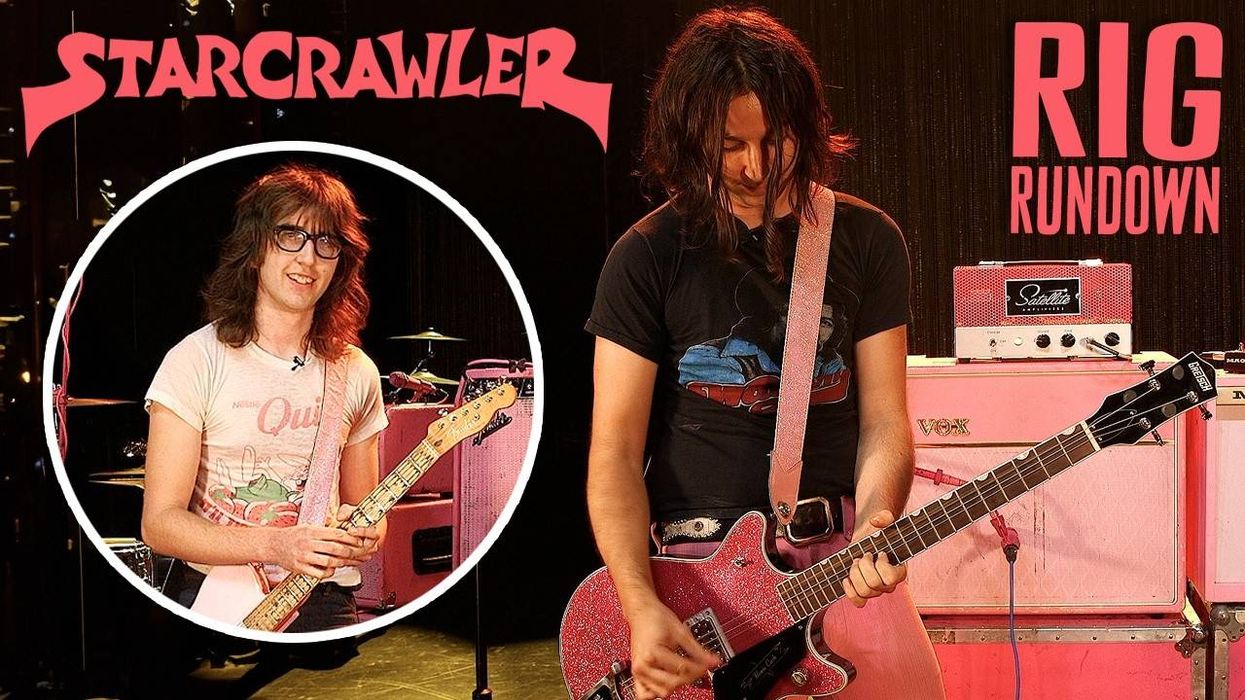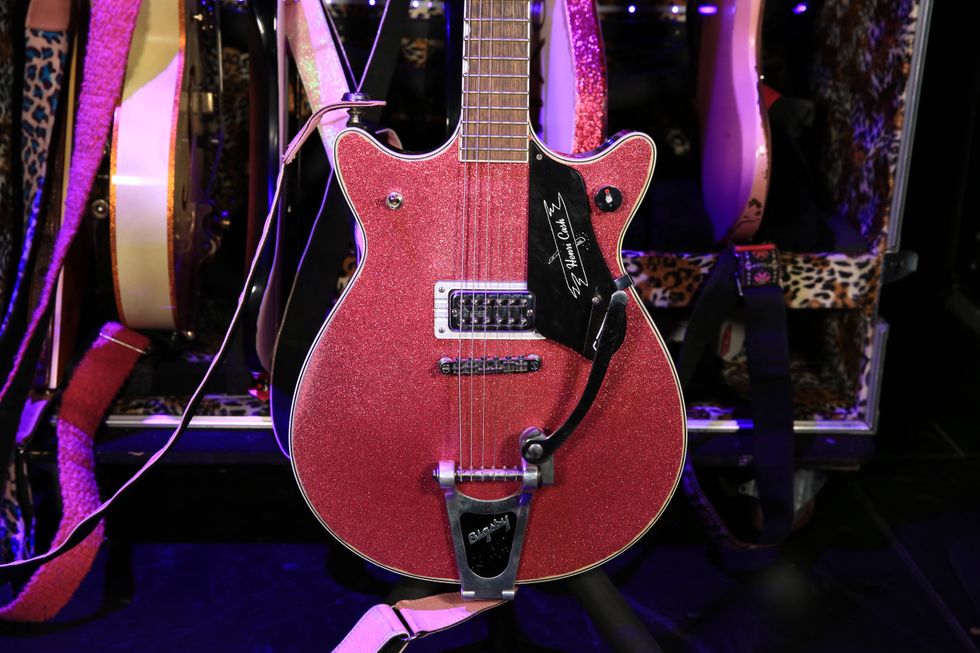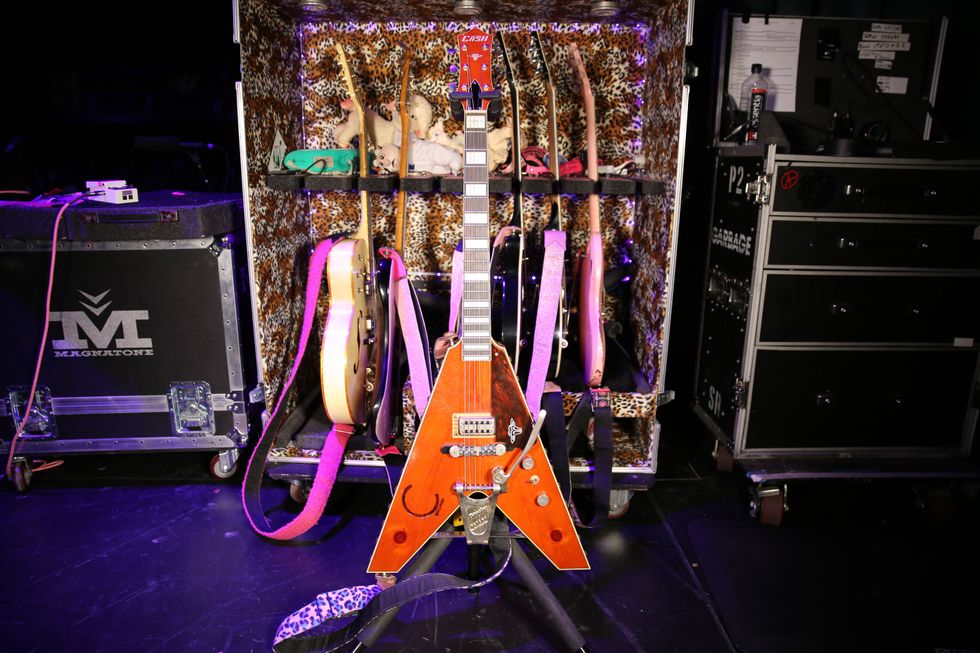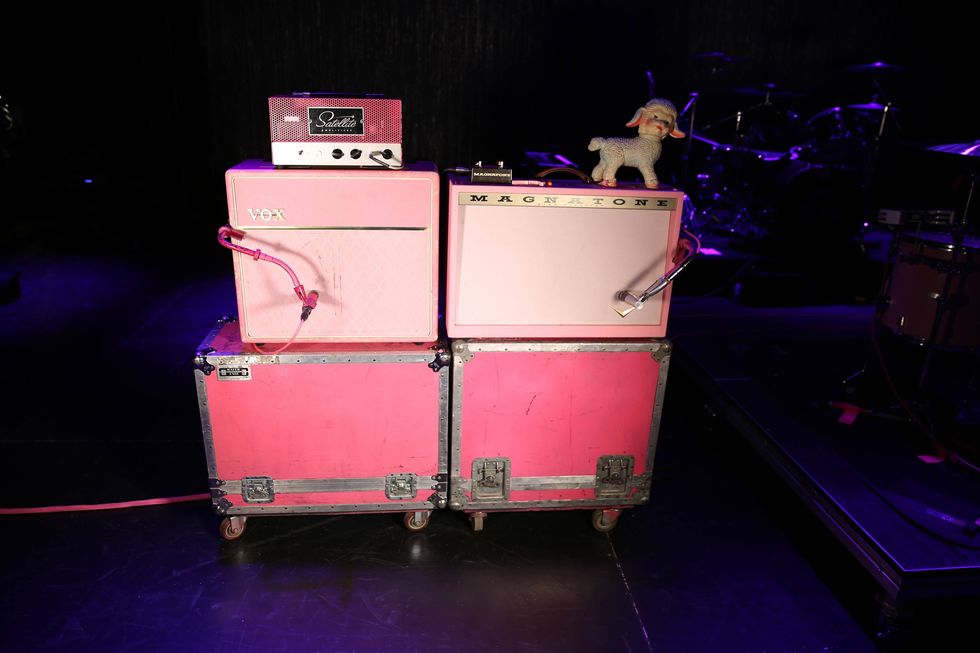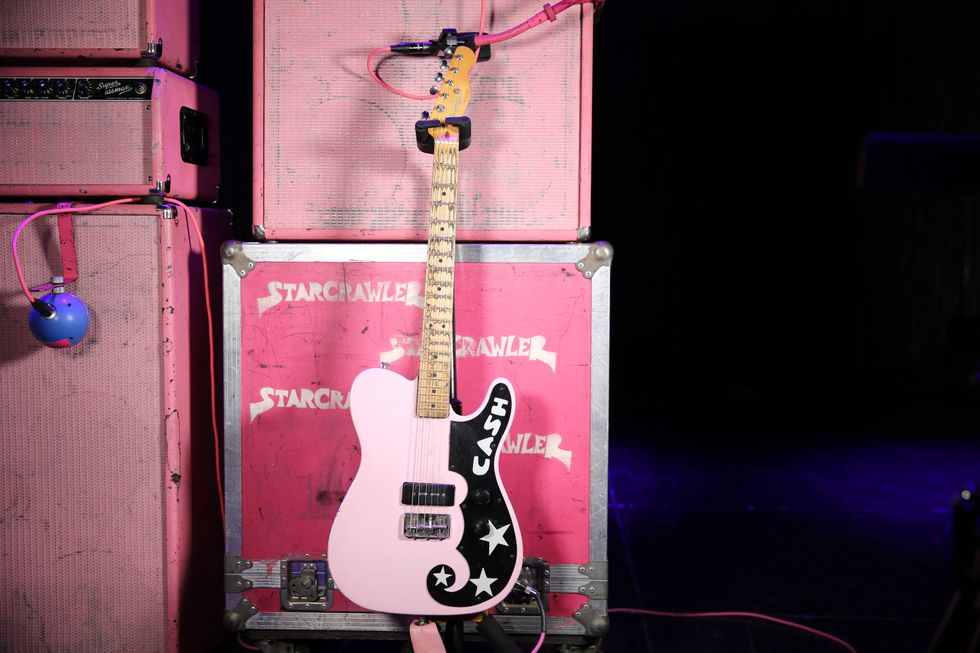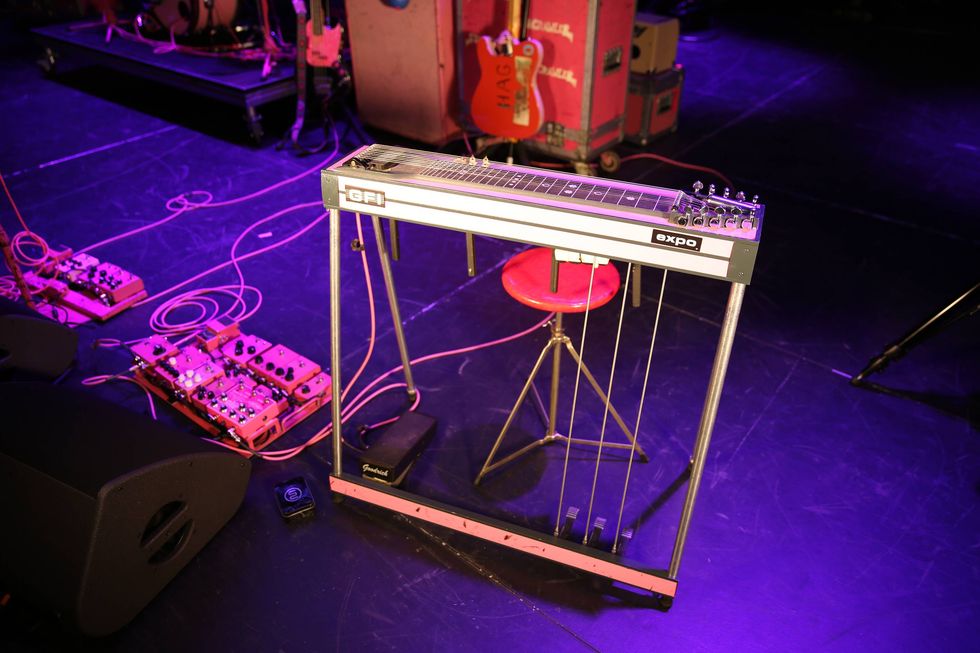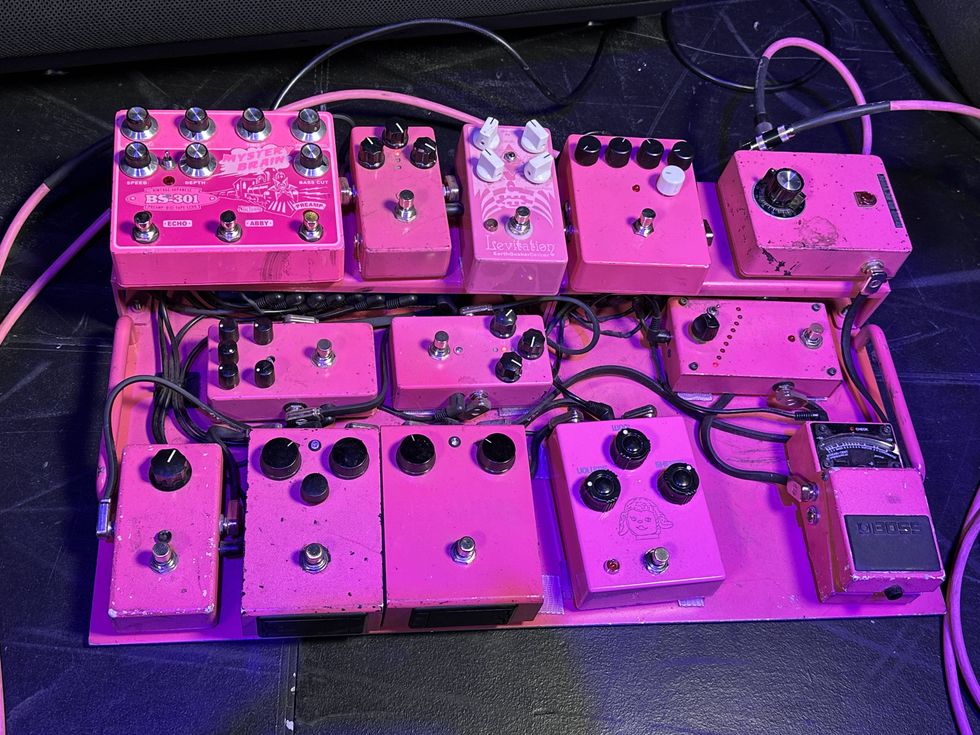Guitarist Erik Bickerstaffe exquisitely executes a tightwire act that contrasts and fuses brutality and beauty using a bargain baritone Gretsch and stock Tele.
Loathe is a challenging listen. In 10 years, they’ve released three dissimilar albums, a pair of pulverizing EPs, and a couple reinventive, collaborative covers (with Sleep Token and Teenage Wrist) of their own material, proving they thrive on juxtaposition and keeping your ears off guard. The Liverpool foursome morph from blissful dream state to Nightmare on Elm Street and everything in between. Their sound can be familiar like an old friend but thrilling like a first date.
From the ashes of Our Imbalance’s pure metalcore madness—featuring guitarist/vocalist Erik Bickerstaffe, vocalist Kadeem France, and drummer Sean Radcliffe before recruiting guitarist Connor Sweeney and bassist Shayne Smith—rose the reformation that became the experimental Loathe in 2014. (Current bassist Feisal El-Khazragi replaced Smith in 2018 and Sweeney left the band in 2021.)
Nu-metal bounce, djent precision, shoegaze shimmer, post-hardcore chaos, synth segues, barbwire breakdowns, moody melodies, and singalong choruses aren’t groundbreaking elements. But how they make them gel and grate against each other is what makes Loathe special. In a matter of minutes, they can make you scream, cry, and then dance before inciting you to do all three at once. The difference is in the disparate.
Their creative applications of the past, present, and future keep them ahead of the audience providing a deep musical menu. If you don’t like the first Loathe song you hear, there’s a chance the next one will be your favorite.
“The four of us have very differing influences, but when we work together, we create something very unique,” contends Bickerstaffe.
Even Bickerstaffe’s guitar choices are at odds. He wants the heaviest sound possible but avoids using 7- or 8-string guitars because of their brash tones and jagged aesthetics. He prefers to swing the sledgehammer in a classic costume of a Gretsch Jet (and formerly a Jazzmaster).
“We wanted a British-rock sound that pushes further into modern extreme-metal influence when we were writing. I don’t like anything too metallic or sharp sounding. For the band we are and what we’re trying to do musically, it’s not the right thing,” states Bickerstaffe.
It’s been over four years since their heralded I Let It In and It Took Everything, and the fans are growing impatient. The band is aware of the wait and are concerned with impressing themselves rather than capitalizing on the attention.
“There’s music in the world the four of us as individuals miss hearing, and we want to be the people that create that in our own style. Hopefully, people who agree with us are along for the ride, and if not, that’s absolutely cool. We’ve been through a lot, and we’re working really hard together to make sure the music that we put out is exactly what we want to put out. We’ll let it speak for itself when we release it,” explains Bickerstaffe.
Before Loathe’s opening slot supporting Knocked Loose on May 1 at Nashville’s Marathon Music Works, Bickerstaffe carved out some time to talk with PG’s Chris Kies. Bickerstaffe details the obtainable instruments that help him deliver both deathly and dreamy moments, why he shies away from the metallic edges of metal, and what fans should expect from the ever-evolving outfit’s new music.
Brought to you by
D’Addario Strings: https://ddar.io/wykyk-rr
D'Addario XPND: https://ddari.io/xpnd.rr
Baritone Is the New 7
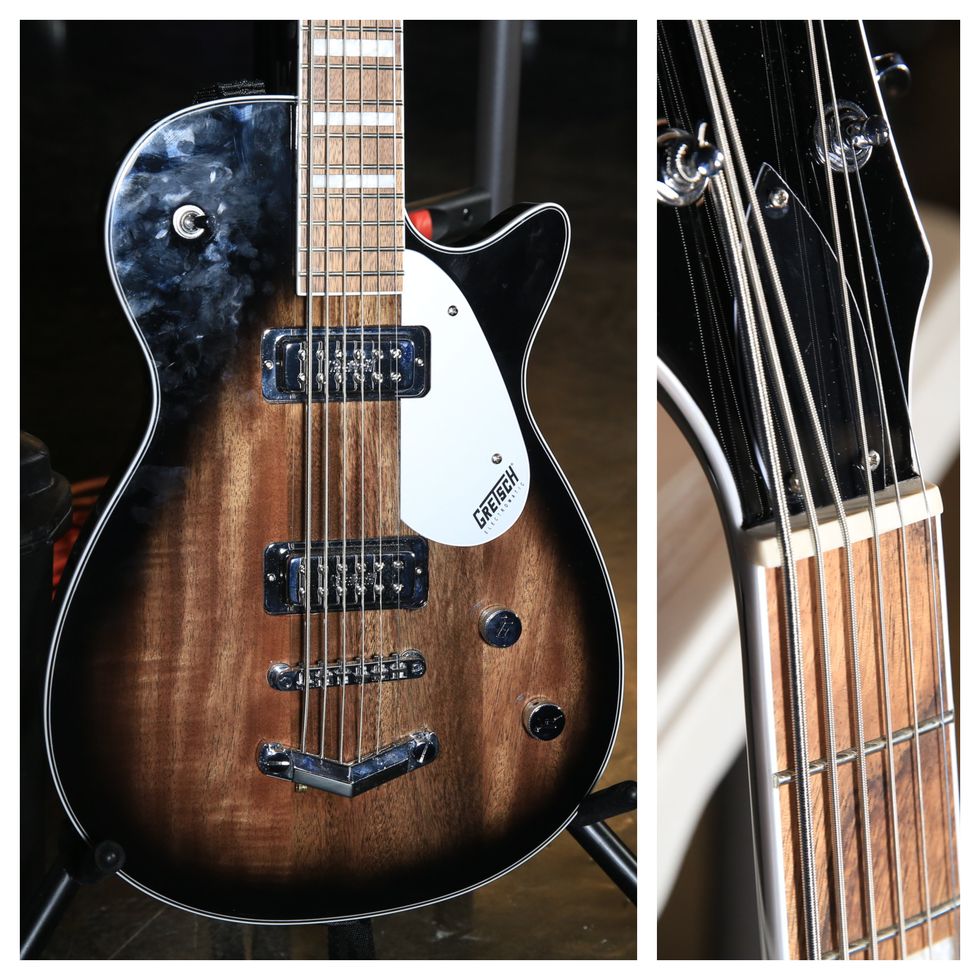
Bickerstaffe started playing an ESP 7-string Stephen Carpenter model until his drummer Sean Radcliffe suggested he use a Bass VI like the Beatles to better fit the band’s sound and vision.
He played a Squier Vintage Modified Jazzmaster for years before landing on this current Gretsch G5260 Electromatic Jet Baritone that’s been getting it done since releasing 2020’s I Let It In and It Took Everything. It’s all stock aside from the nut filed open to hold Bickerstaffe’s monstrous .105 nickel bass string in the low-E position. The other five strings are from a pack of D’Addario EXL157 Medium Nickel Wound Electric Baritone set (.014–.018–.026w–.044–.056). He moves between a custom E (E–A–E–A–D–F#) and standard B tunings, and the .105 bass string helps keep the tension in a similar range.
Twisted Tele
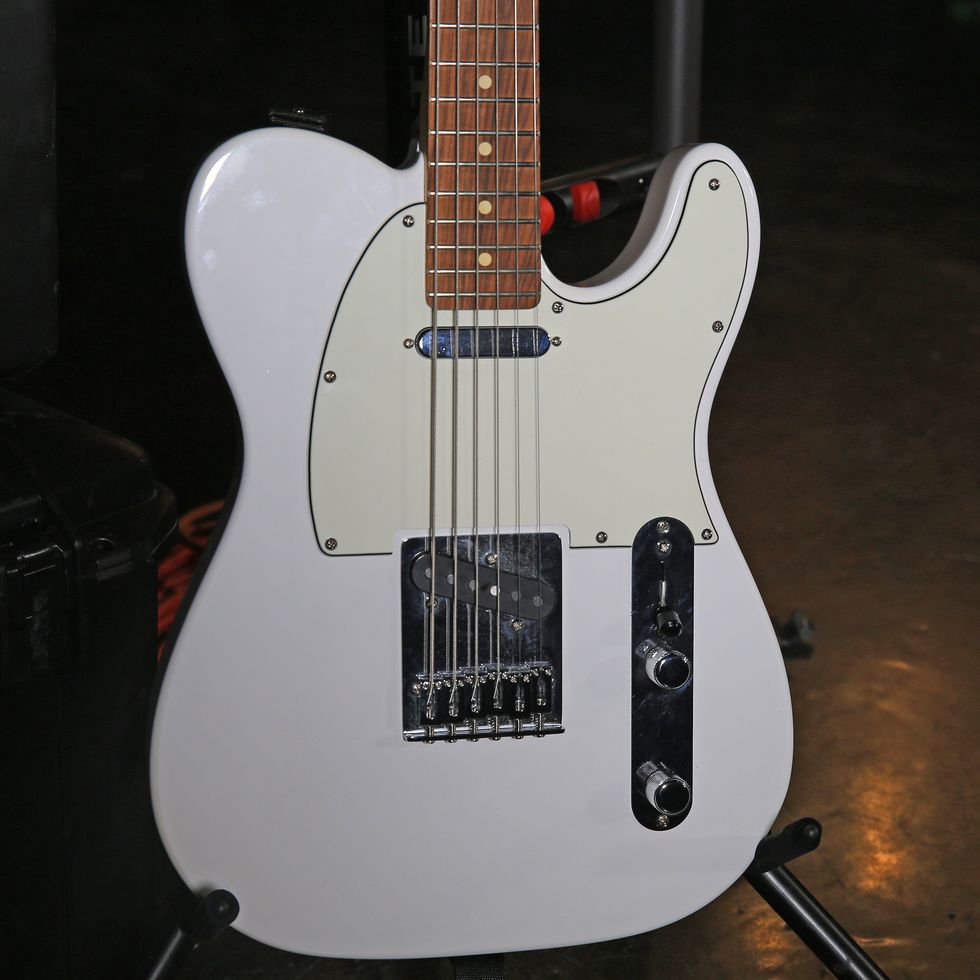
For gentler songs like “Is It Really You?” and “Screaming,” Bickerstaffe turns to this Fender Player Telecaster that rides in a tuning utilizing the five highest strings of drop D with a low-A (A–D–A–D–G–B).
Come Fly with Me
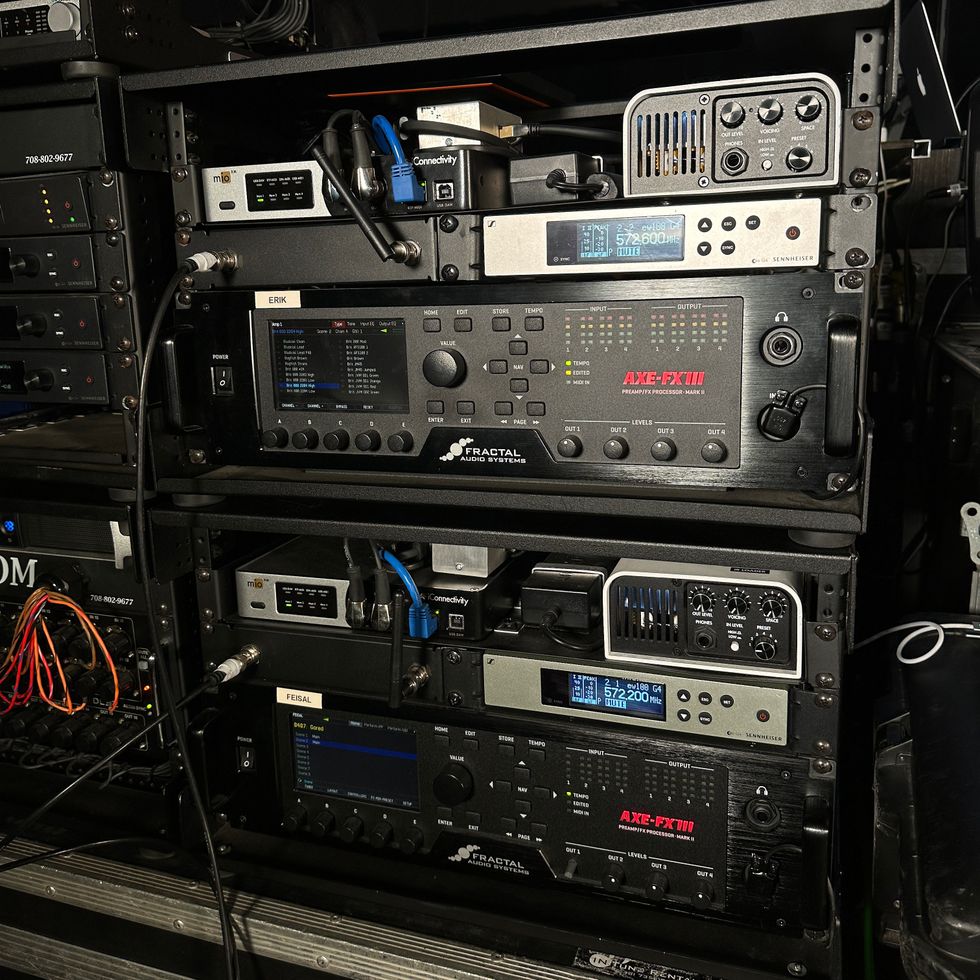
Touring in the U.K. and on headlining runs, Bickerstaffe always opts for tube heads. He originally went with Hiwatt DR504s before moving onto Marshall JCM800s. Ideally, he’d bring a multiple-amp setup onstage to use the strength of each head (independently and combined) throughout a set depending on the song’s mood. Opening for Knocked Loose on this run, he simplified matters, relying on a Fractal Audio Axe-Fx III that leans heavily on a modded JCM800 amp model. Most of the utilitarian effects needed each night are provided by the Axe-Fx III, however, Bickerstaffe does have an inspiration station below. The Two Notes Torpedo Captor X is not being used right now since he’s not using amps or cabs and the Sennheiser EW 100 G4-Ci1 Wireless Guitar System relieves his need for cables.
Eric Bickerstaffe's Pedalboard
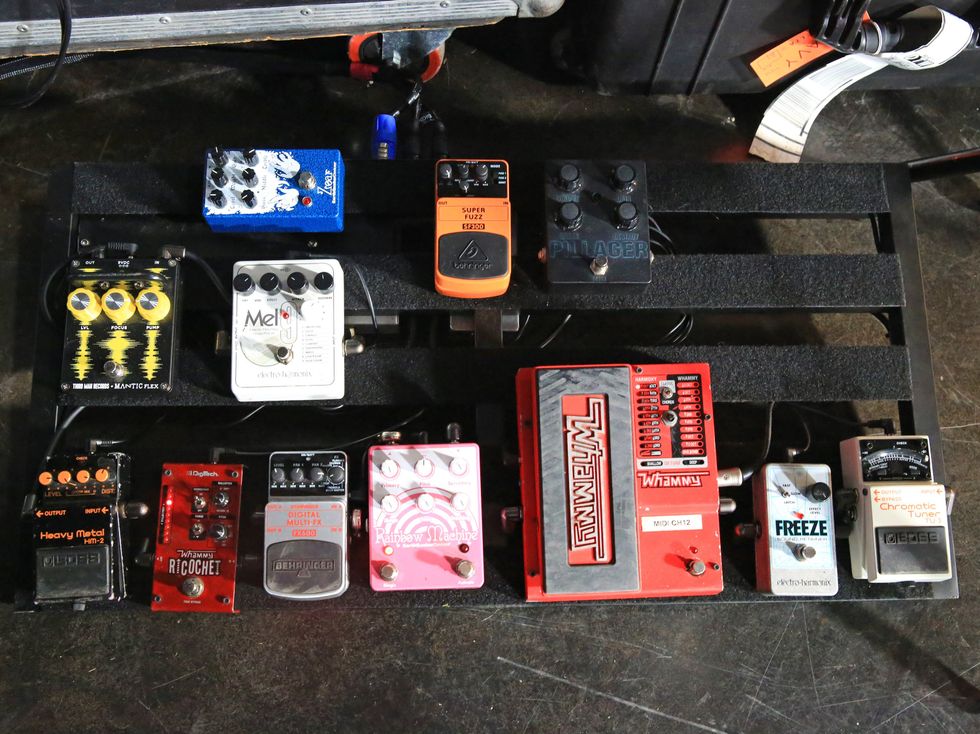
To keep things interesting and fun, Bickerstaffe does still tour with a proper pedalboard, but you’ll notice it’s more a place for experimentation than execution because several pedals are on their way in or out as they’re not being powered or in the chain. As of May 1 in Nashville, these are the tone twisters Erik had on deck: EarthQuaker Devices Zoar, Behringer SF300 Super Fuzz, 141FX Pillager, Third Man Mantic Flex, Electro-Harmonix Mel9, Boss HM-2 Heavy Metal, DigiTech Whammy Ricochet, Behringer FX600 Digital Multi-FX (his first pedal), EarthQuaker Devices Rainbow Machine, Electro-Harmonix Freeze, and a Boss TU-3 Chromatic Tuner. And there is one crucial pedal that he prefers over the Axe-Fx III option and that’s the DigiTech Whammy and its octave blend.
Shop Erik Bickerstaffe's Rig

Gretsch G5260 Electromatic Jet Baritone
Fender Player Telecaster
EarthQuaker Devices Zoar
Behringer SF300 Super Fuzz
Electro-Harmonix Mel9
Boss HM-2 Heavy Metal
DigiTech Whammy Ricochet
Behringer FX600 Digital Multi-FX
EarthQuaker Devices Rainbow Machine
DigiTech Whammy
Electro-Harmonix Freeze
Boss TU-3 Chromatic Tuner
Two Notes Torpedo Captor X
Sennheiser EW 100 G4-Ci1 Wireless Guitar System
D’Addario EXL157 Medium Nickel Wound Electric Baritone Set





![Rig Rundown: Russian Circles’ Mike Sullivan [2025]](https://www.premierguitar.com/media-library/youtube.jpg?id=62303631&width=1245&height=700&quality=70&coordinates=0%2C0%2C0%2C0)


















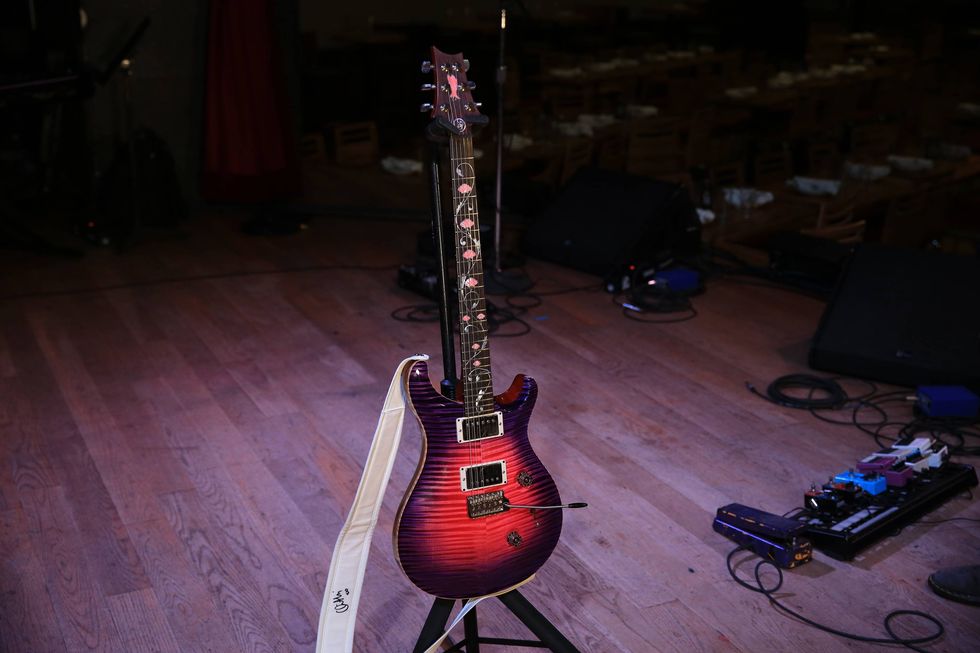
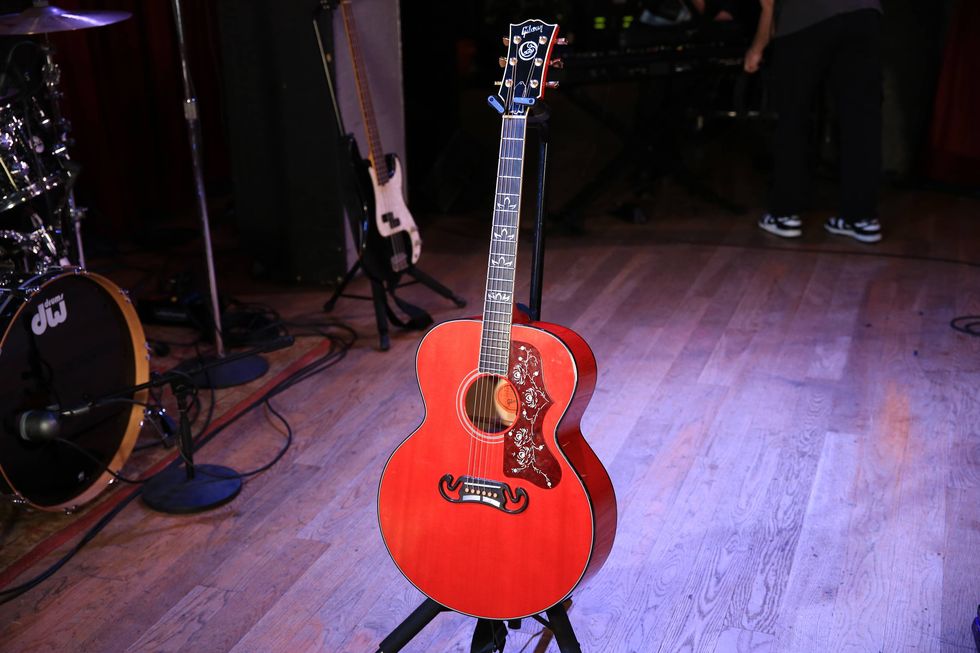
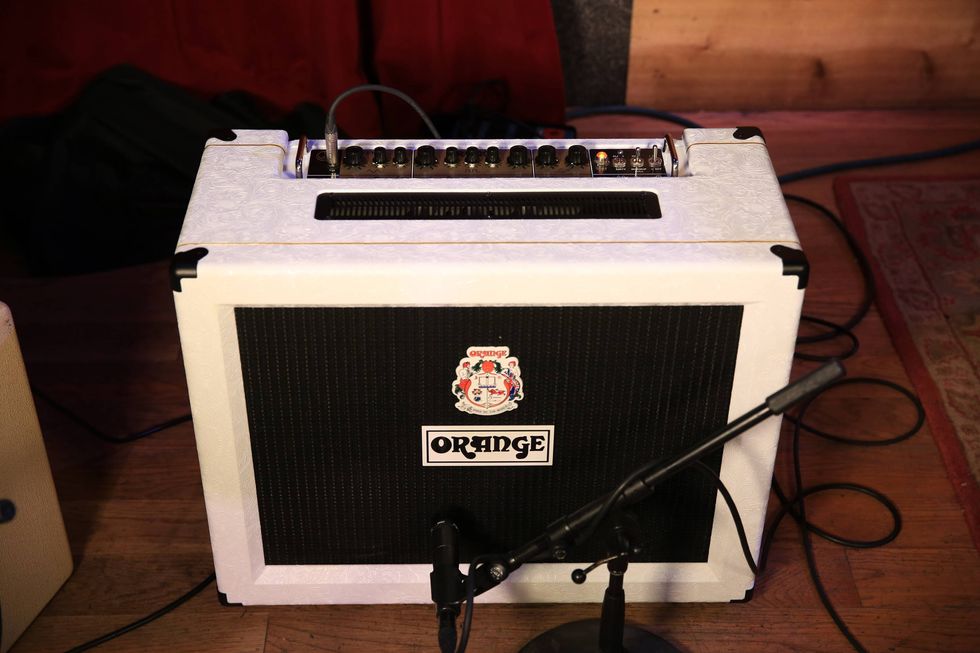
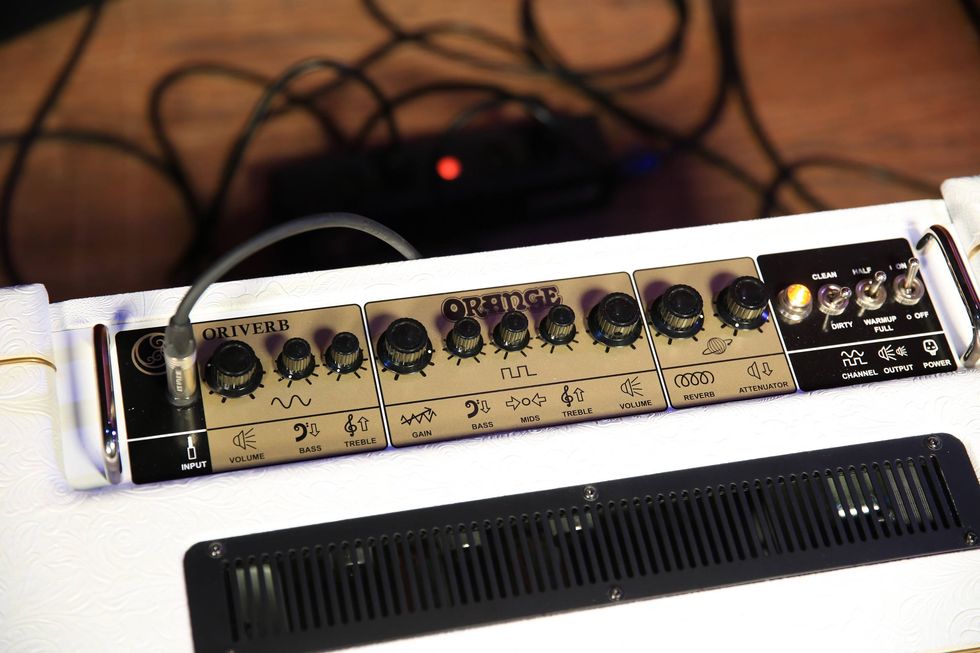
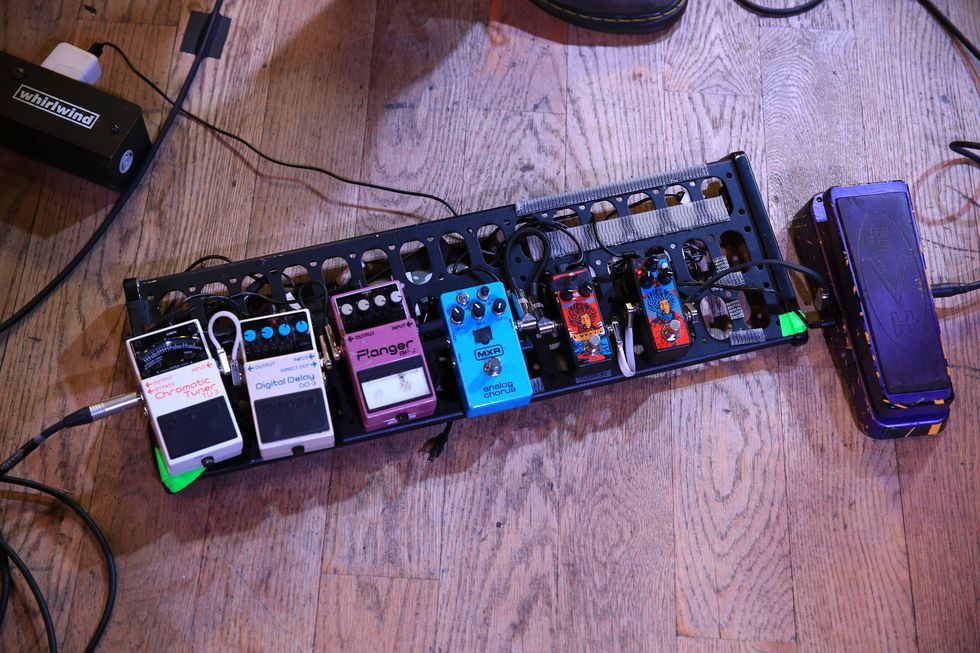

![Rig Rundown: AFI [2025]](https://www.premierguitar.com/media-library/youtube.jpg?id=62064741&width=1245&height=700&quality=70&coordinates=0%2C0%2C0%2C0)




















 Zach loves his Sovtek Mig 60 head, which he plays through a cab he built himself at a pipe-organ shop in Denver. Every glue joint is lined with thin leather for maximum air tightness, and it’s stocked with Celestion G12M Greenback speakers.
Zach loves his Sovtek Mig 60 head, which he plays through a cab he built himself at a pipe-organ shop in Denver. Every glue joint is lined with thin leather for maximum air tightness, and it’s stocked with Celestion G12M Greenback speakers.







